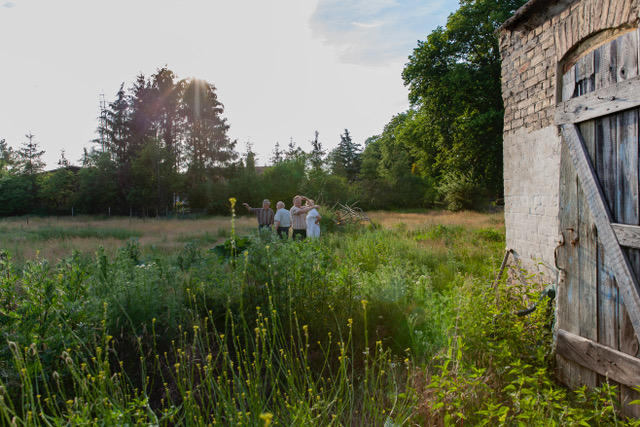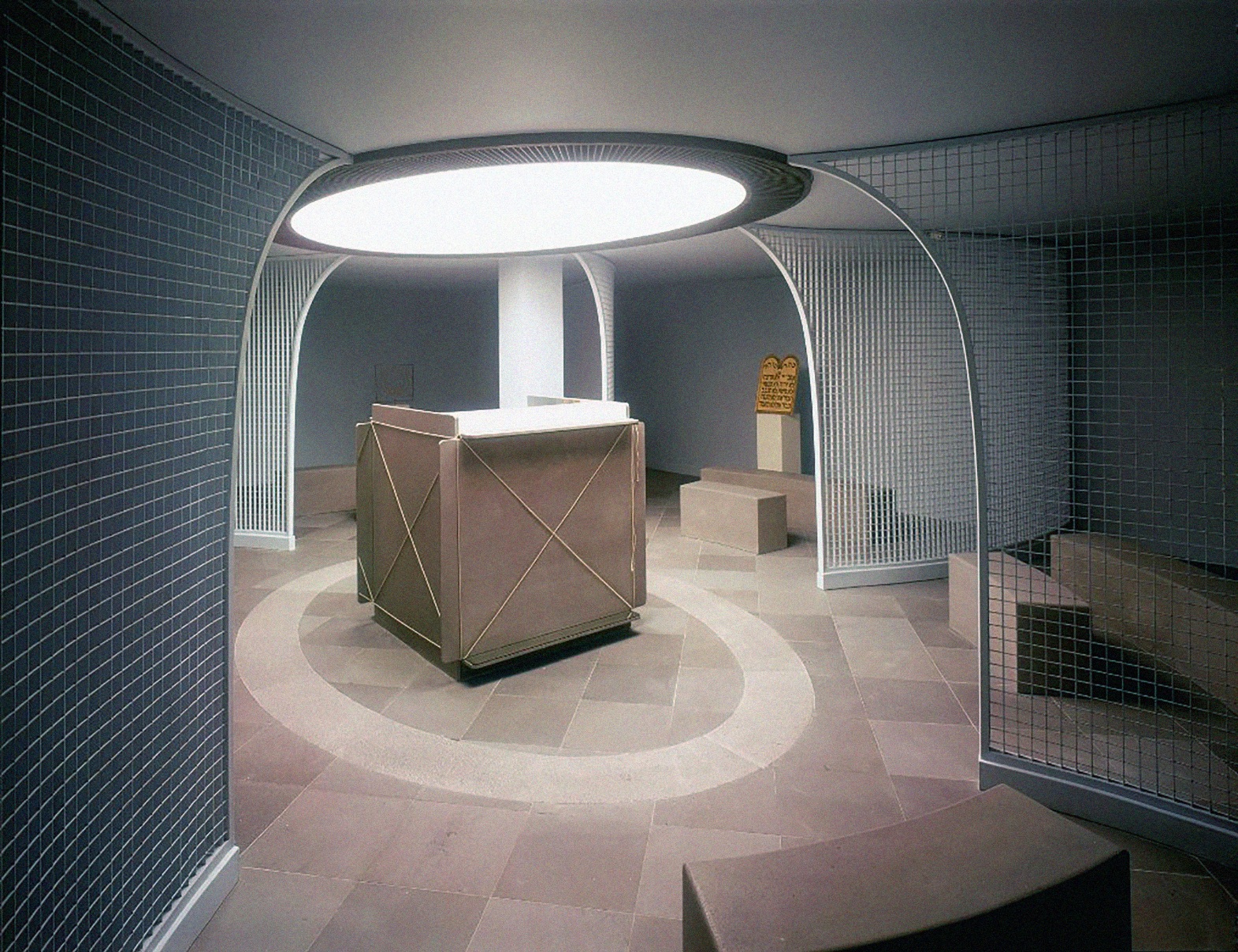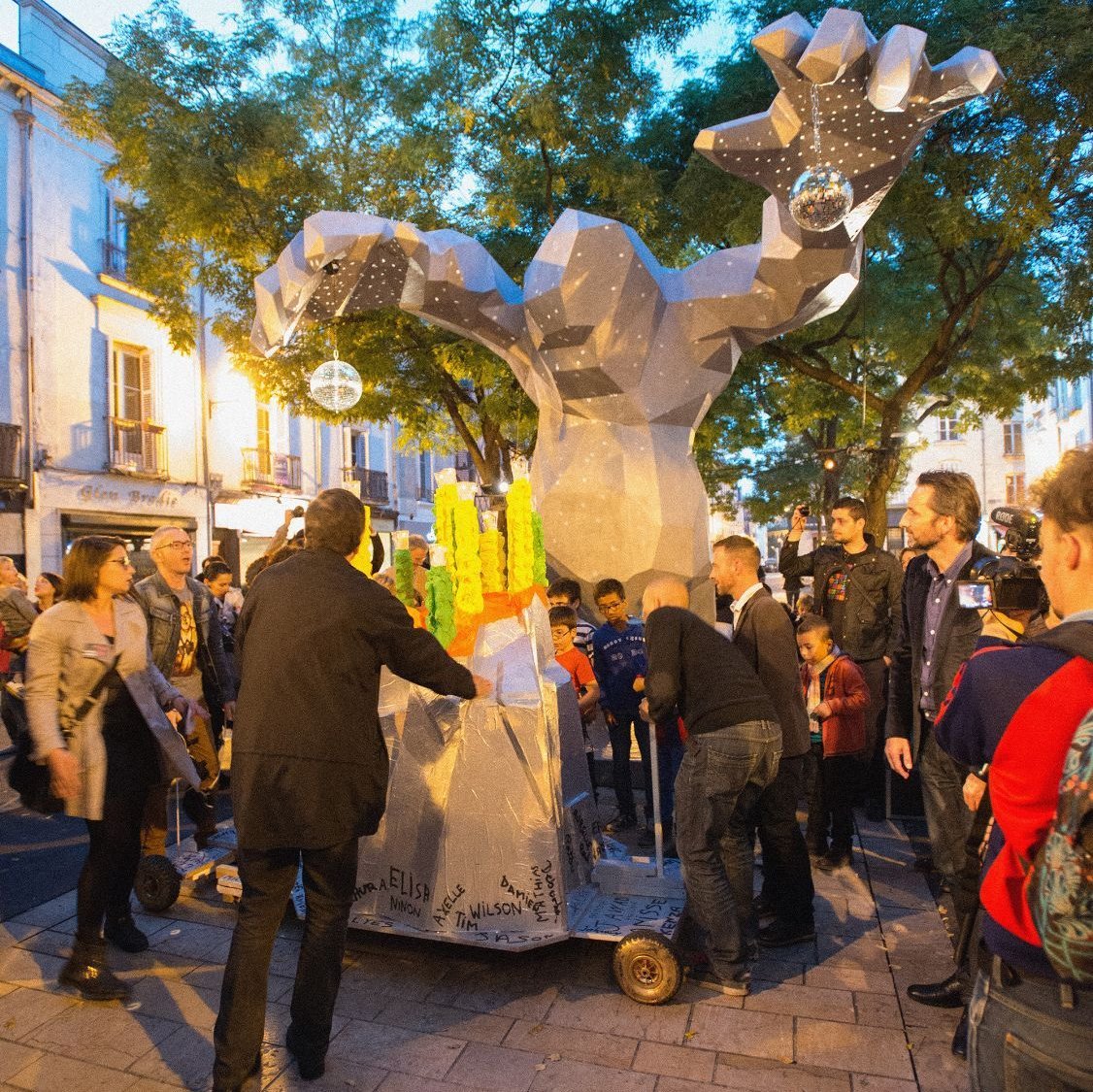Karin Harrasser
In her text, written in 2013 and now published in German for the first time, cultural studies professor Karin Harrasser looks at the New Patrons model against the backdrop of the old questions concerning the relationship between art and society. In the New Patrons projects, she recognises a new approach to reshaping the relationship between art and life and answers to the question of what art should be and what it should be for. To this end, she emphasises in particular the flexible parameters that are readjusted in the projects of the New Patrons.
Karin Harrasser (*1974) is a professor of cultural studies at the Linz University of the Arts. Her work focuses on techniques of the body, self, and media; processes of temporalization; theories of the subject/object; popular culture; science fiction; genres and methods of cultural studies; gender and agency.. In addition to her academic work, Harasser has also been involved in various artistic and curatorial projects.
The text was originally written for the publication Faire art comme on fait société (les presses du réel). Published in 2013, the reader covers a broad field of theoretical perspectives on the programme of the New Patrons. The adapted and supplemented English-language edition Reclaiming Art. Reshaping Democracy (les presses du réel) was released in 2017.
As Society. The Production of Art and New Self-Relations
The reciprocal relationship between art and society is part of a specific history of modernity, and alongside changing artistic practices and programs, it applies to what we understand as politics and society, as well as to what we understand as knowledge or certainties. This history has been written with various terms, but regardless of which constellation of terms is preferred—from a representative function to free art, from constituting meaning to destroying all meaning, from representation to autonomy, and with the avant-garde an impetus to return art into “life” (Bürger 1974) —the idea that artistic production is distinct from other forms of production and existence bears a historical index, which art in the twentieth and twenty-first century has been and still is repeatedly confronted with anew.
There are at least two levels that can be distinguished here: one is the political nature of aesthetic procedures that must be forever interrogated anew, a “political aesthetic”, which is spe- cifically not an “aestheticization of politics”, as Walter Benjamin characterized the efforts of the Futurists associated with Filippo Tomaso Marinetti. As Benjamin (Benjamin 1977, 168f.) put it, an aestheticization of politics does not help the masses to gain their rights, but instead “expresses” their desires in an ideological manner. In contrast to this, since the beginning of the twentieth century there have been various attempts to politicize art: from the aesthetic-political activism of the Dadaists and the constructive methods of Russian Formalism, through Fluxus and Situationism, this path has led since the seventies to, in the broadest sense, “participative” approaches.
Since the nineties, The New Patrons have taken a new approach to rearranging and developing the relationship of art and politics/“life”, providing ever new answers in their numerous projects to the question, “Who can now say what art is meant to be?”, which is at the start of each video documentation of the projects. The answer is naturally a different one with each project, but here I would like to take a closer look at several set-screws in the relationship of art and society, which are respectively readjusted by those responsible for the projects.
My thesis is that the mode of collaboration in the projects of The New Patrons is a specific and extremely productive mode of “as” or of “as if”. This is suggested by the last sentence of the manifesto of the New Patrons: “To the same extent, the art work does not become the emblematic expression of a single individual, but rather of multiple independent persons, who are committed to appearing as society and giving the contemporary project a communal sense.” Multiple persons, who are committed to appearing as society. To me, this seems to be a sustainable definition of the political under the auspices of governmentality. If, following Walter Benjamin or Jacques Derrida, one understands “society” as a social relation that is always becoming, that is thus never realized, but consists specifically in its self-query, then politics would be a rare event that consists of a group constituting itself, that goes into the public as something, with the aim of leaving the given behind, wanting to be something else: a different social form, a previously unknown composition of actors, a new form of communication that impels new embodiments of relationships.
I do not think it is a coincidence that art assumes a central position in the system in this kind of constellation, as modern art considers itself, counter to the pragmatic definition of politics, as the “art of the possible” (Otto von Bismarck), as a procedure for exploring what is only half known, what is contingent, more as a capacity for imagining than a technique for reaching a goal. An attitude like this is found, for example, in Robert Musil’s The Man Without Qualities, this unfinished and incompletable novel that develops the sense of the possible as a literary method. The sense of the possible does not simply ignore reality, but rather establishes a relationship with it, one in which the goals and ways of action multiply, fan out, become complex, (Vogl 2007) and constrictions and compulsions turn out to be “pedantic”. A “pedantic precision” (what is meant in this case is jurisprudence, but in other places also the sciences (Musil 1978, 247), oriented to objectivity, follows phantasms—according to Musil—because it is subject to a misunderstanding that people behave rationally. (ebd., 17)
The sense of possibility is thus not merely melancholic, fantastical, dreamy, but rather invents phantasms, in order to newly assess reality, to find possibilities not yet discovered in it. The sense of possibility is not a matter of fishing in murky waters, but rather “the man with an ordinary sense of reality is like a fish that nibbles at the hook but is unaware of the line, while the man with that sense of reality which can also be called a sense of possibility trawls a line through the water and has no idea whether there’s any bait on it.” (ebd.) Musil exchanges the purposefulness and purported facticity of “life snapping at the bait” (ebd., 247) for a concrete, expansive and space-structuring practice, even if it is initially erratic or poetic. Musil calls this procedure “imaginary precision”, a procedure more faithful to the facts than simple logics of inherent necessities are, and which goes beyond a positivist concept of objectivity by taking into account the fact of the power of human imagination. It corresponds to the pragmatically idealistic fictionalism of Hans Vaihinger’s “philosophy of as-if”. The Kant scholar Vaihinger already proposed in 1911 that, instead of relating what is unknown and unfamiliar to the familiar and the “real”, models of reality should be examined as “useful fictions” (which could be atoms, God or the soul), which unfold their meaning in practical contexts of life, in all their contradictoriness. (Vaihinger 2007/1913)
The extent to which such procedures of the as and the as-if are related to the magic of the market economy opening up the world, the capacity of capital to invent new possibilities, is a question I will address in conclusion.
Calling Art: Occasions
But first of all: on which occasions is the call for art heard? Conspicuously often, the call for art has to do with so-called “existential questions”: the redesign of the hospital chapel in Marseilles by Michelangelo Pistoletto, the renovation of the chapel of rest of the pathology department of the hospital in Garches, the sanitary facilities of a shelter for the homeless in Bordeaux. There is always an emphasis on the part of both the artists and the patrons that this has to do with the whole of life: with life and death, with the meaning of life, with “corporealities”10, and with social relationships with “others”— the homeless, migrants, the deceased. To begin with, this sounds like a classic definition of art: art as secularized religion offering orientation in questions of meaning, when religion is no longer sufficient or has become difficult (for instance in Marseilles, where the experience of the fact of confessional polyphony at the deathbed led to the desire for a multi-confessional re-dedication of the former chapel).
What is also conspicuous is that the call for art is linked with doubts about the “rational” versions of the care of the body and of the soul. Following Michel Foucault, modern politics is essentially the concern the bodies and souls of the individuals, which is tied in parallel to agendas of supra-individual biopolitics (hospitals, social welfare institutions, insurance agencies). In the reflections of the patrons, one wish was always explicit: not to approach the spaces to be newly designed within classic biopolitical institutions function- ally, but rather to make room for the individual care of the body, life and soul. It is thus mentioned again and again that architects are said to have too little imagination to envision individual uses, but concern about driving out the “spiritual” is also articulated. But what exactly does “spiritual” mean here, and why should artists have a particular skill in dealing with this? At the least, this sheds an interesting light on the imagined space of the effect of art, as its responsibility is situated in some projects where, in the past, the minister, the pastor (and later their scientific doubles: the psychol- ogist, the sociologist) were at work.
If we leave out metaphysics for the time being, the artist is shifted into a position in the system that Foucault addressed as “pastoral power”:11 the unobtrusive conduct of souls, which has its origins in the ritual and ascetic practices of antiquity, and which in modernity becomes, through education and consistent self-query, the incorporated self-regulation of individuals. From a perspective like this, current artistic production could be understood less as a “relapse” into a representative mode (for example, the expression of God in the architecture and furnishings of the great cathedrals of the Middle Ages and the Renaissance), and more as an explication and disclosure of the modern individual’s work on themselves. Artistic work is then work on the basic operations of self-assurance in light of the demands of a compulsion to live, a compulsion to live a productive life. It is possible to understand the participants’ statements in this sense, which refer to spirituality, the needs of the soul, needs of the socially disadvantaged for “personhood” and a stake in society. This could be the case, for instance, when the construction of a hammam is understood by those responsible as an inclusive gesture and as a counter-project to hygienic measures for the homeless that are merely administrative.
In the video about the redesign of the prayer room in the hospital in Marseilles, Michelangelo Pistoletto says, “l’art assume la religion”. Art assumes religion, takes it over. Art as religion: this does not mean that art has become metaphysics in modernism, but rather makes it an instance that takes up and exhibits the political instrumentalization of pastoral care.
Open-ended: Gap Art
The projects start, one could say, where the certainties of modernism have become uncertain: confidence in a rational treatment of the structures of human needs by instances of public authority, in progress through competing ideas, in the delegation of metaphysics to the individual and the individual’s striving for happiness. Which confidence is sown instead? This can be gathered from the cultivated practices—and only there.12
The focus is on the—primarily verbal—exchange among all participants. However, this exchange does not follow the (educational) ideal of a competition of the right and true idea, even though it seems at first glance to resemble a Habermasian scenario of a finding a reasonable consensus. Its medium is not the learned treatise, the comprehensive presentation and the consensual solution of a problem, though, but rather speaking itself: the articulation of wishes and interests, as well as of doubts and contradictions; in addition, what is frequently at the beginning is explicit not-knowing, not-being-able-to-say-something. The collaboration between patrons, mediators and artists does not start with a developed “job description”, a detailed “commission”, but rather with the opposite: a wish to do something, for which the way is not yet paved. A line—in Musil’s words—that is drawn through the water.
The respective “problem” is not solved according to a pre-structured scheme, but taken somewhere else instead: usually into the concrete space in/at/around which something is supposed to happen. The conversation is then gradually expanded, again not only in the direction of experts (they are present too: architects, landscape designers, craftspeople, the patrons themselves), but most of all and primarily in the direction of the conditions given by the space to be designed itself: the given construction facts (walls, colors, light), the surrounding landscape, the enormous functional and pecuniary conditions in buildings of public “hygiene” (for example, furnishing prices per square meter calculated from the prospective use, myriad safety regulations).
First of all, a complexity is produced, and then gradually something crystallizes that can no longer be separated from the conditions of its creation. The material conditions of the draft become interlocutors themselves, and they are treated in a way that differs from classical drafting and planning processes that aim to dominate the space and the process and make them calculable as a whole. If the processes and communication in Garches, Marseilles and Bordeaux are compared with the course of a conventional public call for tender, the differences become obvious. Staff and users may call for a construction measure, and as soon as it enters the cycle of administration, it runs according to a certain scheme: definition of the requirements, call for tenders, selection of competitively entered proposals (usually by a body of experts).
At all of these central points the New Patrons operate differently: neither is there a clear catalog of requirements at the beginning, nor is there a call for tenders, nor an “objectifiable” procedure for the selection of the artist. On the other hand, the mediating instances are multiplied at every point: through the involvement of the mediator, for instance, or through the patrons constantly taking part in the discussions, or also through the idiosyncratic “execution of the commission” by the artists. This, in turn, has less to do with purported individual genius, but rather with the current social role attributed to the artist as “free”, which is used in the projects to explore alternative problem solutions.
Alexander Kluge once spoke of that which modern procedures of rationalization, normalization and systematization leave open—intentionally or not—as “the gap left by the devil”.13 The New Patrons seem to want to stretch this gap from the inside, digging themselves in at exactly the point where no procedure holds, in order to furnish the gap itself. This process results not only in new artworks, but also in new self-relations and knowledge forms for the patrons and new variations of use for the clients of the care agencies.


